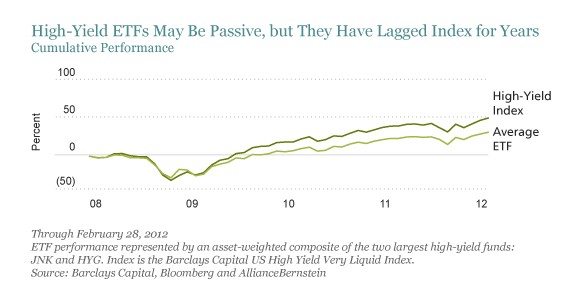The Three Best Bond ETFs for 2014
Post on: 4 Май, 2015 No Comment

Higher yields and lower interest-rate risk are an optimal combination in 2014
You can opt-out at any time.
One of the lessons of 2013 bond market performance is that it’s possible to make money in bonds even when long-term yields are rising. Although the yield on the 10-year Treasury note soared from 1.63% in early May to over 3% in the final week of December – as its price fell – there were still a number of investments that delivered a positive return. High yield bonds and senior loans both closed the year firmly in the black, as did short-term bonds. In fact, more than 70 bond ETFs finished 2013 with a gain – and that doesn’t even include inverse ETFs. which rise in value when bond prices fall.
Investors can expect more of the same in 2014. While the outlook for longer-term bonds isn’t favorable by any means, the odds are also against the bond market experiencing a major sell-off with yields already so far off their lows. As a result, there are again likely to be pockets of opportunity for those willing to look beyond index funds .
With that as background, the three bond ETFs that look like they can stand out from the pack in 2014 are:
Vanguard Short-Term Corporate Bond ETF (VCSH)
SPDR Barclays Capital Short Term High Yield Bond ETF (SJNK)
ProShares Short Term USD Emerging Markets Bond ETF (EMSH)
Why these three funds? The simple reason is that they allow investors to pick up some extra yield without having to take on added interest-rate risk. Due to their short maturities, these funds should experience much less of a hit than funds invested in longer-term bonds in the event that U.S. Treasury yields continue to rise. At the same time, all three have above-average credit risk (or the risk that the underlying issuers could default on their debt). As a result, they also pay above-average yields. Still, the improvement in the global economy means that credit risk is low as we enter 2014.
How much extra yield can investors expect? VCSH offered a 30-day SEC yield of 1.43% at the start of the year, while SJNK’s was 3.79%. EMSH is too new to have official yield data yet, but it should pay investors a yield in the 3.6% — 3.8%. Comparatively, the 2-year Treasury started the year with a yield of 0.35%. The three funds have expense ratios of 0.12%, 0.40%, and 0.50%, respectively.
Two of these funds also had a “stress test” of sorts during 2013. Despite the surge in Treasury yields, VCSH nonetheless returned 1.4% while SJNK finished with a gain of 6.1%. EMSH opened in November 2013, so extended performance data isn’t available.
What are the Risks?
One risk to the outlook for these funds is a major, unexpected global event that sends investors fleeing into ultra-safe investments. If that occurs, corporate. high yield, and emerging market bonds will take a hit, and these ETFs – and EMSH in particular – will experience higher volatility than plain-vanilla short-term bond funds.
Read my review of the ProShares Short Term USD Emerging Markets Bond ETF here .
There is also the chance that bond yields will surprise everyone by declining rather than rising. In this scenario, longer-term bonds would outperform and the returns of these funds would likely look unimpressive in comparison. While this is certainly possible, there is probably more downside risk than upside potential in longer-term bonds – meaning that VCSH, SJNK, and EMSH likely offer a better balance of risk and return than reaching for yield in long-term debt.
The Bottom Line
There may be other funds that produce bigger returns in 2014. Leveraged and inverse funds, by their nature, are designed to be high-risk, high-return propositions for those who can tolerate risk and have enough knowledge to trade sophisticated instruments. For example, the best bond ETF of 2013 – the PowerShares DB 3x Short 25+ Year Treasury Bond ETN (SBND) – returned 41.10%. Don’t expect these three funds to produce returns of that magnitude. Instead, they represent a way for investors who can’t tolerate the low yields on safe bond investments. but who can’t take on the risk of investing in the stock market, to generate decent returns in a potentially challenging environment.
Disclaimer. The information on this site is provided for discussion purposes only, and should not be construed as investment advice. Under no circumstances does this information represent a recommendation to buy or sell securities. Always consult an investment advisor and tax professional before you invest.














